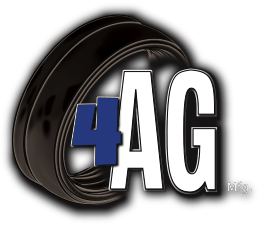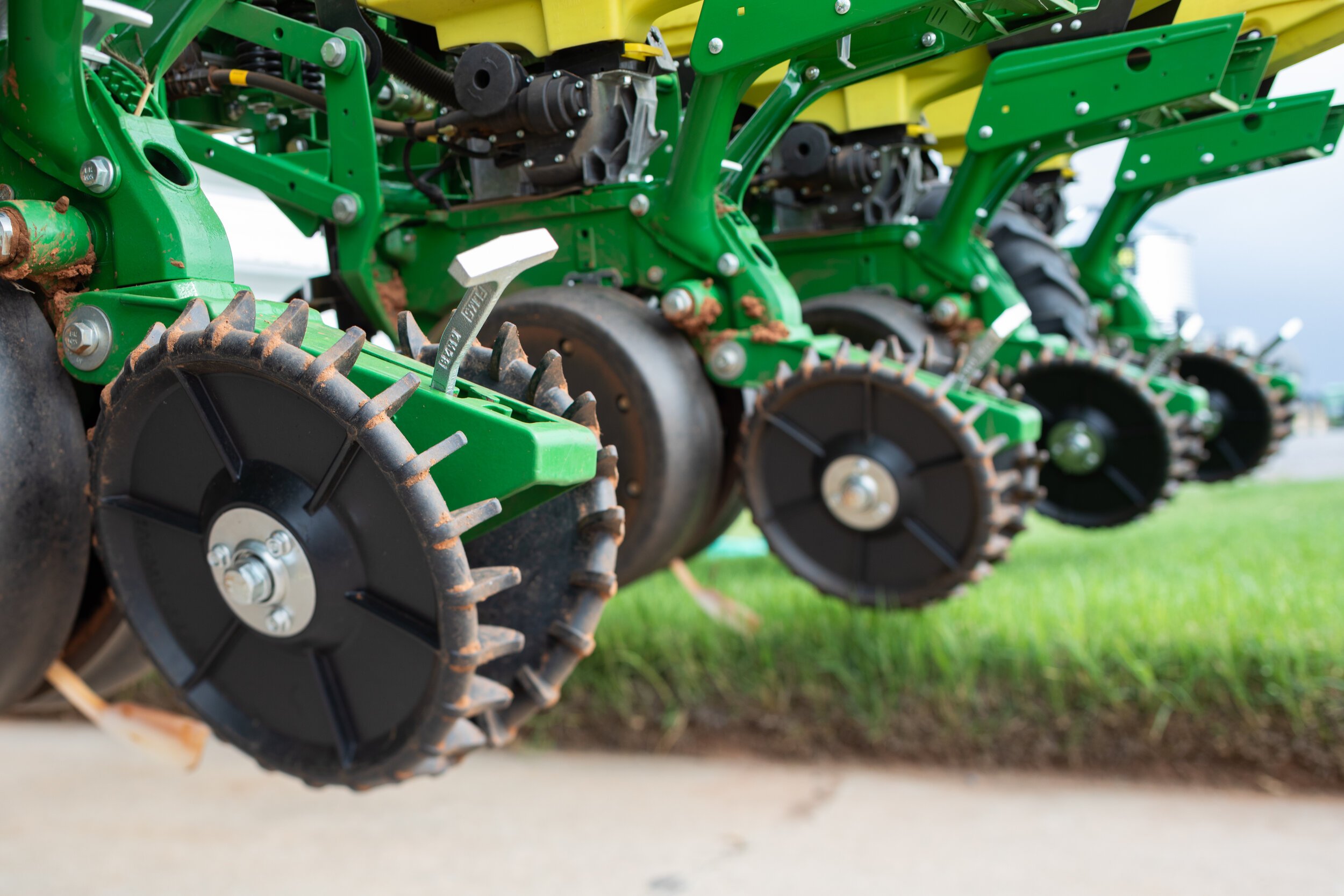Innovative Approaches to Refine Your No-Till Planter
Every seasoned farmer knows the secret to a successful no-till planting season starts long before the first seed hits the soil. Preparation, precision, and a keen eye for detail can transform your approach to planting, ensuring a yield that speaks volumes of your dedication and hard work. Among the myriad of tools at your disposal, one stands out for its critical role in securing your crop's future – the planter. Specifically, when we hone in on optimizing this vital piece of machinery, the importance of closing wheels for planters becomes undeniably evident.
Perfect Planter Balance
Taking your no-till planter for a field inspection a few days before the planting season kicks off is a wise move. This pre-planting routine allows for ample time to fine-tune the necessary settings without the rush to start sowing.
Ensuring that the planter's main frame remains evenly balanced, both from front to back and side to side, is crucial. Such alignment guarantees that the parallel arms maintain a near-parallel position to the ground, enhancing the efficiency of row cleaners, disc openers, and, notably, the closing system, which includes the closing wheels for planters.
Operators of twin-line, split-row planter setups may need to adjust their equipment. This necessity becomes apparent particularly when loading the front units heavily with seeds, unlike scenarios that utilize only the rear units for planting corn. Such an adjustment ensures that closing wheels for planters and other components are in the optimal position for every planting scenario.
Colter Consideration For Closing Wheels For Planters
Many seasoned no-till farmers choose to remove colter from their planters, noting significant improvements after doing so. Removing colter helps avoid soil displacement from the seed zone, which complicates achieving proper slot closure, particularly under moist conditions or when operating at speeds over five mph. Moreover, colter can create a false layer at the seed slot's bottom, hindering seed-to-soil contact and reducing emergence.
A critical factor in planter performance is the condition of the closing wheels for planters. Worn spiked closing wheels lead to reduced effectiveness, necessitating their replacement when their diameter shrinks to less than 12 inches to ensure optimal slot closure.
The challenge with colter extends to dry regions and is more pronounced in planter models that limit colter adjustment, contributing to water pooling in seeded areas, thereby affecting crop emergence.
Enhancing Row Cleaner Efficiency
Proper leveling of the planter significantly boosts the efficiency of row cleaners, with floating row cleaners equipped with depth bands being especially suited for no-till farming. Floating row cleaners can increase yields by 10 to 13 bushels per acre over fixed models, highlighting the advantage of depth bands in heavy-residue scenarios for enhancing yield.
These row cleaners not only remove debris but also lightly till the seed zone, leading to soil warming by 6 to 8 degrees Fahrenheit, which is beneficial for quicker seed emergence. This is especially useful in reducing the bounce of gauge wheels in consecutive corn plantings.
To maintain engagement with the soil and consistent operation, adding weights or down-pressure springs to floating row cleaners may be necessary for no-till corn environments. Depth bands play a crucial role in regulating the engagement of row cleaner teeth and managing residue exit, preventing blockages in conditions with abundant, loose residue. Incorporating closing wheels for planters into this system further ensures optimal seedbed preparation and planting efficiency.
Strategic Nutrient Placement
In no-till systems, where soil temperatures are generally more relaxed, applying pop-up fertilizer directly in the row, using tools like the seed firmer, alongside additional nitrogen near the seed row, is crucial for enhancing nutrient availability, particularly phosphorus, which is less accessible at lower temperatures.
The seed firmer not only secures the seed at the bottom of the slot but also accurately places 3 to 5 gallons of pop-up fertilizer in the row, benefiting soils that are deficient in phosphorus or have low pH levels. This method has been shown to improve yields significantly when planting early in more excellent soils.
Closing the seed slot effectively in no-till conditions, especially in moist fields, poses a challenge. Traditional closing mechanisms might need to perform more adequately, but integrating closing wheels for planters can make a significant difference. Adding 25 to 50 pounds of nitrogen per acre close to the seed row, slightly below the seed, can lead to substantial yield improvements.
Accurate fertilizer placement is critical, with unit-mounted openers preferred for their consistency over frame-mounted alternatives, particularly on uneven terrain or during turns. Adjusting frame-mounted openers away from the seed zone often diminishes the effectiveness of fertilizer application.
Incorporating a mix of 10-34-0 with nitrogen, placed in a band along the row, has also been shown to boost yields. Supporting research indicates that banding phosphorus fertilizer with the planter enhances early growth and phosphorus absorption in no-till corn, offering a clear advantage over broadcast or deep-banded methods.
Optimal Closure For Seed Success
Farmers dealing with high-moisture or clay-rich soils often face challenges in consistently closing the seed slot, which can affect seed emergence and increase vulnerability to pests. Using a set of 13-inch spiked closing wheels for planters alongside gauge-wheel tires with a reduced inner diameter can effectively seal the seed slot in such challenging environments. These wheels engage and compress the soil around the seed from both sides.
To further refine this process, depth bands can be integrated into the closing system, allowing for precise depth control, a technique particularly beneficial for fields under conventional tillage as well.
Achieving the best results from a spiked-wheel closing setup requires minimal down pressure on the closing wheel arm. Over-applying pressure tends to lower the arm's rear end, diminishing the wheels' ability to properly close the seed slot, especially as the closing wheel teeth wear down. Despite the instinct to increase down pressure to enhance seed slot closure, this often needs to be revised to improve the closing efficiency of closing wheels for planters.
Enhancing Your Planting With 4AG Manufacturing
Every step, from making sure your planter is perfectly level to choosing the right closing wheels for planters, plays a crucial role in achieving a successful planting season. As technology and farming methods continue to improve, so do the opportunities to refine and perfect your planting strategies. By incorporating the strategic use of tires for closing wheels for planters, we help you lay the groundwork for a harvest that meets the highest standards of efficiency and productivity. With our cutting-edge technology and expertise, including strategic choices for tires for closing wheels, we empower you to enhance efficiency and productivity with confidence. Trust 4AG Manufacturing to elevate your planting strategies.

